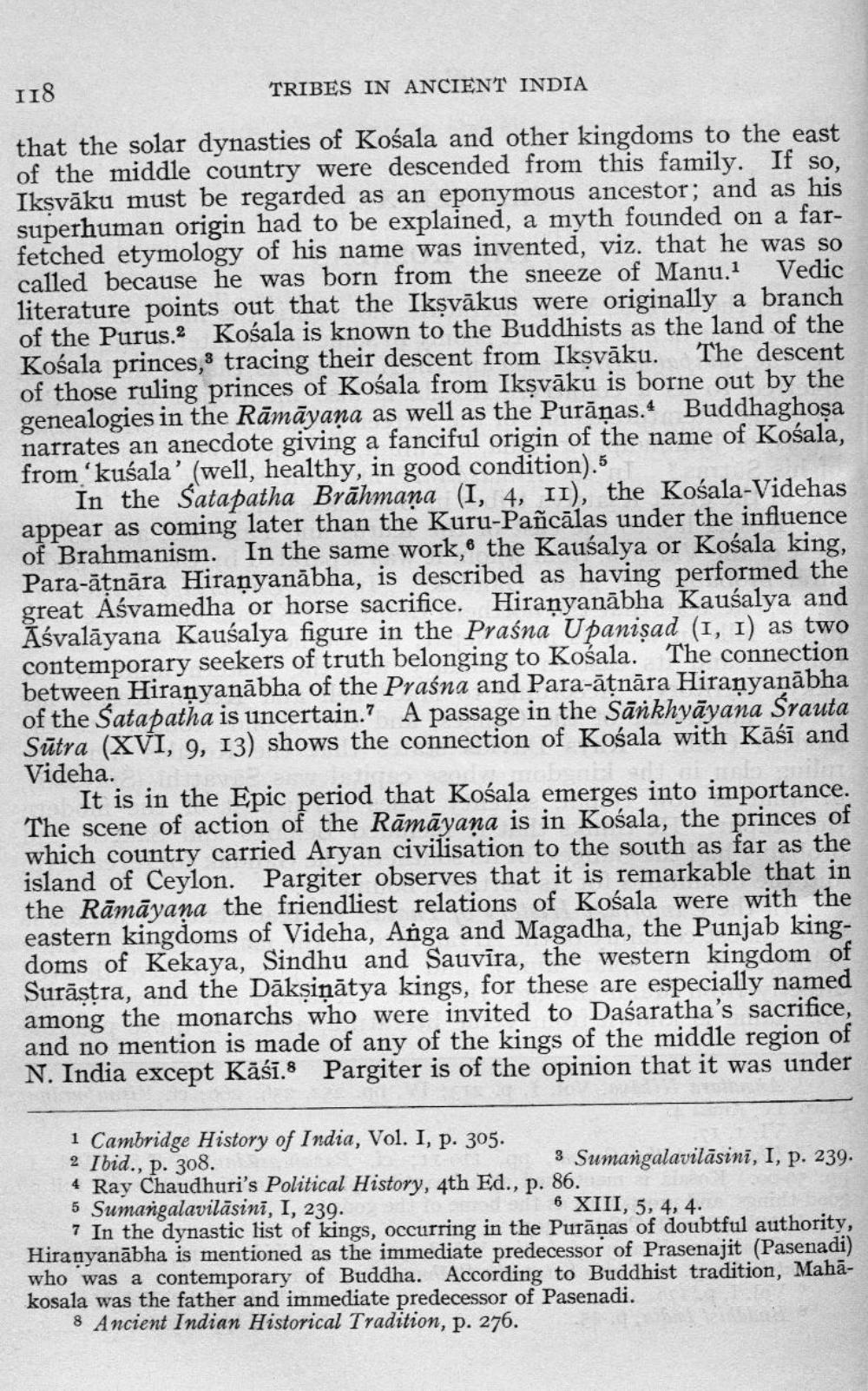________________
118
TRIBES IN ANCIENT INDIA
that the solar dynasties of Kośala and other kingdoms to the east of the middle country were descended from this family. If so, Iksvāku must be regarded as an eponymous ancestor; and as his superhuman origin had to be explained, a myth founded on a farfetched etymology of his name was invented, viz. that he was so called because he was born from the sneeze of Manu.1 Vedic literature points out that the Ikşvākus were originally a branch of the Purus.2 Kośala is known to the Buddhists as the land of the Košala princes,3 tracing their descent from Ikşvāku. The descent of those ruling princes of Kośala from Ikşvāku is borne out by the genealogies in the Rāmāyaṇa as well as the Purāṇas. Buddhaghosa narrates an anecdote giving a fanciful origin of the name of Kośala, from 'kušala' (well, healthy, in good condition).5
In the Satapatha Brāhmana (I, 4, 11), the Kośala-Videhas appear as coming later than the Kuru-Pañcālas under the influence of Brahmanism. In the same work, the Kausalya or Kośala king, Para-ātnāra Hiranyanābha, is described as having performed the great Aśvamedha or horse sacrifice. Hiranyanābha Kausalya and Āśvalāyana Kausalya figure in the Praśna Upanişad (1, 1) as two contemporary seekers of truth belonging to Košala. The connection between Hiranyanābha of the Praśna and Para-ātnāra Hiranyanābha of the Satapatha is uncertain.? A passage in the Sankhyāyana Śrauta Sūtra (XVI, 9, 13) shows the connection of Kośala with Kāśī and Videha.
It is in the Epic period that Košala emerges into importance. The scene of action of the Rāmāyana is in Kośala, the princes of which country carried Aryan civilisation to the south as far as the island of Ceylon. Pargiter observes that it is remarkable that in the Rāmāyana the friendliest relations of Kośala were with the eastern kingdoms of Videha, Anga and Magadha, the Punjab kingdoms of Kekaya, Sindhu and Sauvīra, the western kingdom of Surāstra, and the Dākşiņātya kings, for these are especially named among the monarchs who were invited to Daśaratha's sacrifice, and no mention is made of any of the kings of the middle region of N. India except Kāśī.8 Pargiter is of the opinion that it was under
i Cambridge History of India, Vol. I, p. 305. 2 Ibid., p. 308.
3 Sumangalavilāsini, I, p. 239. 4 Ray Chaudhuri's Political History, 4th Ed., p. 86. 5 Sumangalavilāsini, I, 239.
6 XIII, 5, 4, 4. 7 In the dynastic list of kings, occurring in the Purānas of doubtful authority. Hiranyanābha is mentioned as the immediate predecessor of Prasenajit (Pasenadi) who was a contemporary of Buddha. According to Buddhist tradition, Mahākosala was the father and immediate predecessor of Pasenadi.
8 Ancient Indian Historical Tradition, p. 276.




